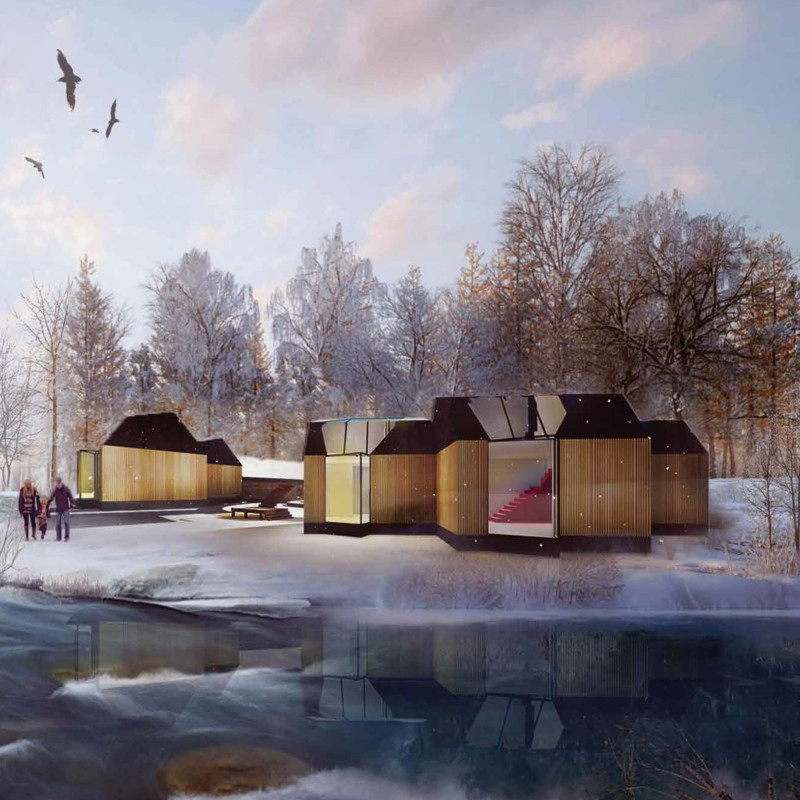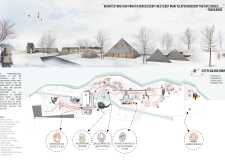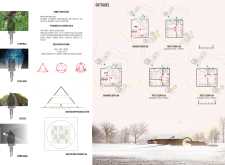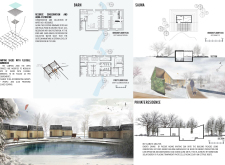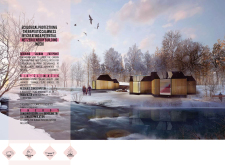5 key facts about this project
At its core, the project embodies a philosophy where architecture fosters a deep connection with the surrounding environment. The design promotes a holistic lifestyle, encouraging inhabitants to interact with nature while providing opportunities for personal reflection and community bonding. The layout features distinct zones that cater to different activities, such as wellness facilities, social gathering areas, and private living spaces. This zoning allows for a versatile use of the site, adapting to the needs of diverse users.
Among the key components of the project, the entrance serves as a welcoming portal that draws visitors into the environment, immediately establishing a sense of tranquility. The wellness center, incorporating spaces for nutrition and health, is designed to support not only physical health but also emotional and mental well-being. The inclusion of private residences, cottages, and meditation spaces adds to the project’s purpose of personal retreat and rejuvenation.
Unique design approaches play a significant role in defining the project. The incorporation of a meditation pyramid, for example, is not merely an aesthetic choice; it symbolizes a holistic approach to wellness. This structure utilizes geometric principles that encourage mindfulness and clarity, harmonizing with the natural landscape. Additionally, living walls and stary night elements are integrated into the design to promote a seamless interaction between occupants and nature, enhancing the sense of space and connection.
Materiality is another essential aspect of the project. The use of natural materials such as wood, glass, and stone underscores a commitment to sustainability and environmental harmony. These materials not only enhance the aesthetic quality of the architecture but also contribute to the overall experience of the spaces. The design encourages light penetration and views of the landscape, creating an environment where occupants feel grounded and connected.
The project also demonstrates a strong commitment to sustainability through various innovative strategies. The incorporation of a resource conservation and aquafiltration system effectively manages water resources, purifying collected water through ecological processes. This feature showcases a forward-thinking approach to addressing environmental concerns while functioning as an educational tool for users about sustainable practices. Furthermore, the project's adherence to the principles of net-zero energy buildings highlights its efficiency and ecological responsibility, utilizing renewable energy sources to minimize its ecological footprint.
By fostering a sense of community, the project incorporates flexible spaces that encourage social interactions among occupants. Features such as camping areas and communal gardens underscore the importance of shared experiences and community engagement within the design.
This architecture project offers not only functional spaces but also promotes a lived experience that is rich in interaction with the natural world. The strategic placement of each element, combined with a deliberate approach to materials and sustainability, results in a thoughtfully crafted environment. The architectural plans, sections, designs, and ideas are all interwoven into a cohesive narrative that emphasizes the relationship between the built and natural environments.
Readers are encouraged to explore the project presentation further to gain deeper insights into the architectural plans and detailed designs that inform this thoughtful and sustainable approach to living in harmony with nature.


